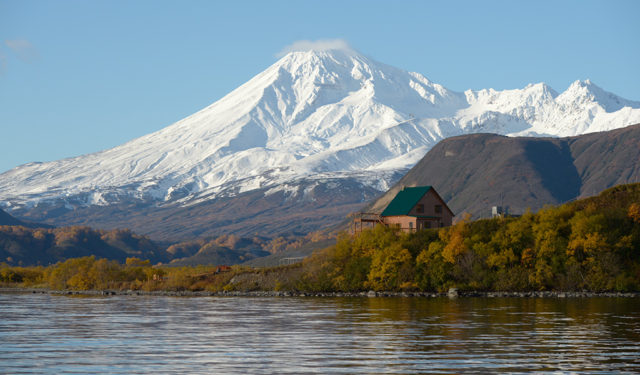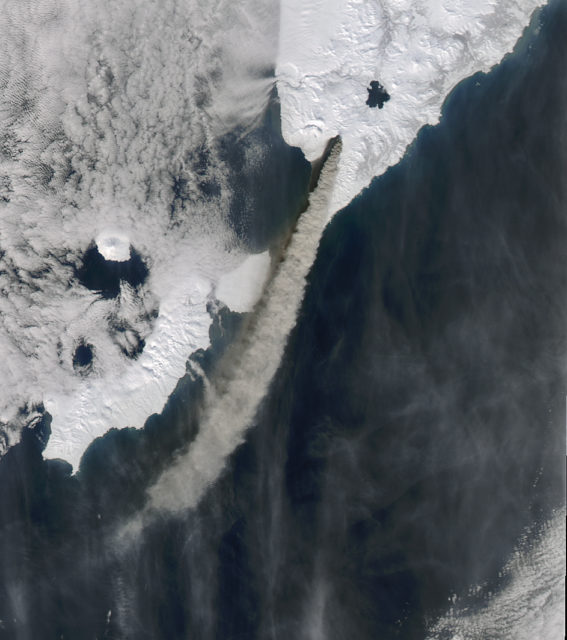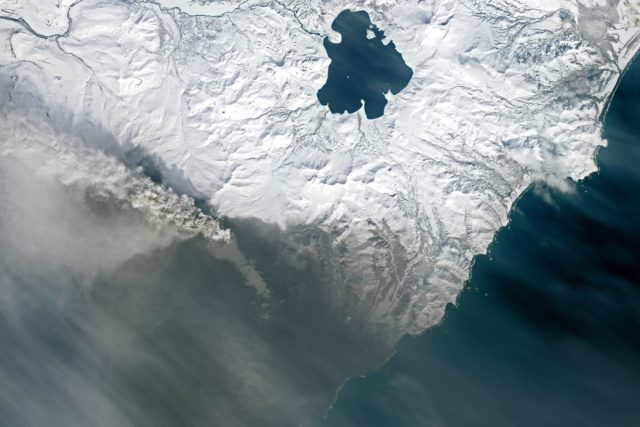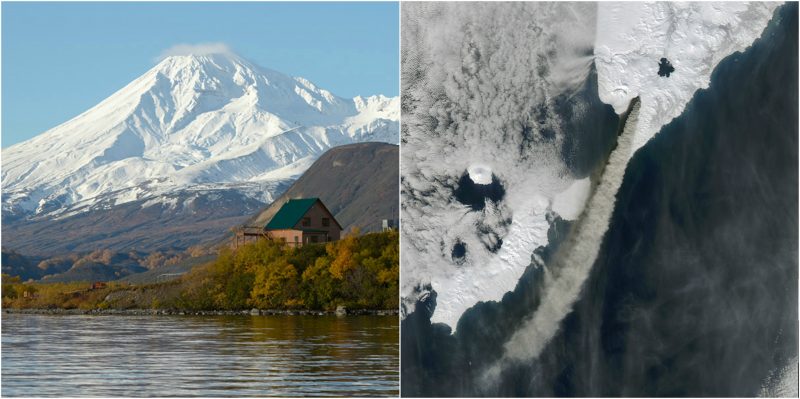After 248 years of inactivity, last week, a volcano awoke on Kamchatka. The last time this sleeping monster erupted, the United States wasn’t even formed as a country.
The eruption of this lava-spitting beast shook the whole region and caused a cloud of smoke which was visible from space.

The Kamblany volcano is the southernmost volcano out of over 300 volcanoes scattered across the Kamchatka Peninsula in Russia. It’s part of a group of volcanoes located on the shore of the Kurile Lake (Oz. Kurilskoye), together with the Diky Greben, Ilyinsky, Koshelev, and Zheltovsky volcanoes. Volcanic eruptions are not a rare event on Kamchatka. This region has 35 active volcanoes, more than anywhere else in the world. In fact, there are four more volcanoes on the peninsula besides Kamblany, which are dormant at the moment. Kamblany lay dormant until March 23rd, and it was considered to be inactive. However, on March 24th, the volcano began to erupt.
This came as a shock to the scientists working for the Kamchatka Volcanic Eruption Response Team (KVERT), who have been monitoring the whole area since 1993. Olga Girina, the head researcher of KVERT, gave a statement to the Russian new agency TASS:
“KVERT’s specialists since 1993 have been monitoring, both by satellite and visual methods, the volcanic activities and nothing pointed to a possible eruption of the Kambalny. It is a pure surprise for us. We continue the monitoring and we will analyze possible threats as data arrives.”
The last recorded eruption of Kamblany happened in 1769. The eruption happened during the American Revolution, the upheaval that led to the founding of the independent United States.

The thick cloud of volcanic ash, which arose after the last Kamblany eruption, is visible from space. Immediately after the eruption, NASA’s Terra satellite managed to capture some spectacular images of the cloud. The ash plume was about 60 miles (100 kilometers) long and spread in the southwest direction. In the next few days, the ash started to fall over the snow-covered area around the volcano, which is also visible in the satellite images.
Besides the obvious threats that the ash might pose to planes and those in the immediate vicinity of the volcano, experts warn about the danger of sulfur dioxide poisoning to people in the area. NASA’s Aura satellite, which is specialized in ozone-monitoring, detected that a huge cloud of sulfur dioxide is going south.

The Kamchatka Volcanic Eruption Response Team currently gives the following information about Kamblany on their website:“The explosive eruption of the volcano continues. Satellite data showed an ash plume about 56 km to the west-southwest from the volcano. The explosive eruption of the volcano continues. Ash explosions up to 19,700-26,200 ft (6-8 km) a.s.l. could occur at any time. Ongoing activity could affect international and low-flying aircrafts.”
Kamblany is in the orange danger zone at the moment – an aviation color code which describes that the volcano is exhibiting heightened unrest with increased likelihood of an eruption or, moreover, a volcanic eruption which is underway with a high ash emission.
